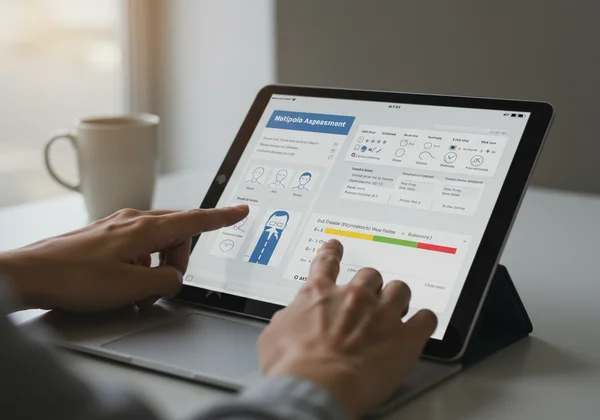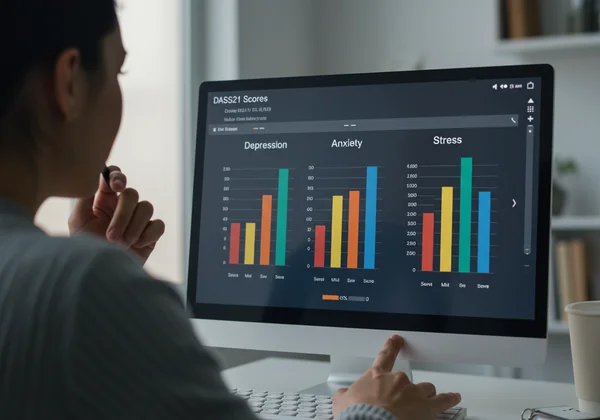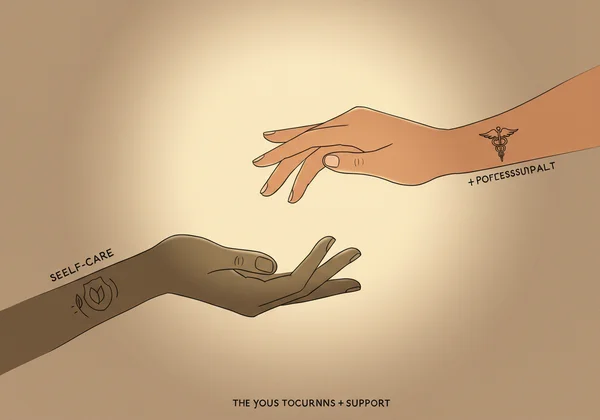DASS21 Score Interpretation: Understand Your Levels
Have you recently completed the DASS21 assessment and are now wondering what your scores truly mean? This comprehensive guide will walk you through calculating and interpreting your Depression, Anxiety, and Stress scores, providing you with a clearer understanding of your mental well-being. Discover how to move from raw numbers to actionable insights. For a free and confidential assessment, you can start your assessment today.
How to Calculate and Understand Your DASS21 Score
The Depression Anxiety Stress Scales (DASS21) is a widely recognized psychological assessment tool. It helps individuals gain immediate feedback on their emotional states. Understanding how this assessment's scoring works is the first step towards self-awareness.
How is Your DASS21 Score Calculated?
The questionnaire consists of 21 questions, with seven items for each of the three scales: Depression, Anxiety, and Stress. Each item is rated on a 4-point severity scale, ranging from 0 (Did not apply to me at all) to 3 (Applied to me very much, or most of the time). To obtain your final score for each subscale, the scores for the relevant seven items are summed and then multiplied by two. This multiplication adjusts the score to be comparable to the full 42-item DASS.

What is Considered a Normal DASS21 Score?
Knowing what a normal score on this assessment means is key to understanding your results. For each subscale (Depression, Anxiety, and Stress), scores typically fall into categories ranging from "normal" to "extremely severe." A "normal" score suggests that you are not currently experiencing significant symptoms in that particular emotional domain. However, even with a normal score, regular self-monitoring of your mental health is a healthy practice. Consider taking the online DASS21 assessment to get your instant results.
Interpreting Your DASS21 Subscale Results
How to interpret these results requires looking at each subscale independently. While the three emotional states often overlap, this tool is designed to distinguish them, offering a nuanced view of your psychological distress.
Depression (D) Subscale: What Your Score Means
The Depression subscale assesses symptoms like low mood, anhedonia (inability to feel pleasure), lack of motivation, feelings of worthlessness, and pessimism. A higher score on the Depression (D) subscale indicates more pronounced depressive symptoms. These scores provide insight into your current level of sadness, hopelessness, and loss of interest in life. This offers vital clarity for those exploring their mental well-being.
Anxiety (A) Subscale: Decoding Your Score
The Anxiety (A) subscale measures symptoms of anxious arousal, including physiological signs (e.g., heart palpitations, trembling), subjective experiences of fear and worry, and situational anxiety. A higher score here suggests a greater degree of anxiety. This part of the assessment can highlight feelings of panic, nervousness, or difficulty relaxing. Understanding this can be a pivotal moment for those seeking clarity.
Stress (S) Subscale: Understanding Your Level
The Stress (S) subscale evaluates general stress and tension, including difficulty relaxing, being easily agitated, and experiencing irritability or impatience. A high score on this subscale points to significant levels of stress affecting your daily life. This scale component can reveal how overwhelmed or wound up you might feel. Taking a moment to assess your stress can lead to better coping strategies.
DASS21 Severity Ratings Explained
The DASS21 severity ratings categorize your scores into distinct levels, offering a clear picture of the intensity of your symptoms across depression, anxiety, and stress. These categories help you understand the potential impact on your daily life.

Navigating Normal, Mild, and Moderate DASS21 Levels
- Normal: Your score falls within the healthy range, indicating minimal or no symptoms in that area during the past week.
- Mild: You may be experiencing some symptoms that are noticeable but generally manageable and have a limited impact on your daily functioning. This level suggests a need for gentle self-care and awareness.
- Moderate: Your symptoms are more pronounced and are likely affecting your daily life, work, or relationships. This might be a signal to consider seeking preliminary support or exploring personal insights further.
These levels offer valuable information for individuals, students, or professionals seeking to understand emotional patterns. Many find a free assessment helpful for this initial overview.
Understanding Severe and Extremely Severe DASS21 Levels
- Severe: Symptoms are significant and consistently disruptive, causing considerable distress and impairment in various aspects of your life.
- Extremely Severe: Your symptoms are highly pervasive and debilitating, indicating a critical level of emotional distress that demands immediate attention.
If your scores fall into the severe or extremely severe categories, it is strongly recommended to seek professional support. The DASS21 is an effective screening tool for identifying potential areas of concern, but it is not a substitute for a clinical diagnosis.
Empowering Your Journey: Next Steps After DASS21 Interpretation
Understanding your your score interpretation is a powerful first step in your mental wellness journey. Whether your scores are normal, mild, or severe, this insight equips you to take proactive steps towards managing your emotional health. The results are designed to provide a snapshot of your current state, guiding you toward informed decisions about self-care or seeking professional guidance.
Remember, the goal is not just to know your numbers, but to use that knowledge to cultivate resilience and well-being. Continue to monitor your emotional states and explore resources that support your journey. Our platform provides a user-friendly tool for confidential self-assessment, offering not just instant scores but also optional AI-driven personalized reports that can provide deeper personal insights and actionable recommendations. Take control of your mental health by visiting our site today and re-evaluating your emotional levels.

Frequently Asked Questions About DASS21 Scores
Is the DASS21 a diagnostic tool?
No, this is not a diagnostic tool. It is a screening scale designed for screening and research purposes. It helps individuals and professionals measure the severity of symptoms related to depression, anxiety, and stress. A formal diagnosis can only be made by a qualified mental health professional.
What should I do after interpreting my DASS21 results?
After interpreting your results, consider your scores in context. If your scores indicate mild to moderate levels, you might explore self-help resources, mindfulness practices, or lifestyle adjustments. For severe or extremely severe scores, seeking professional support from a doctor, therapist, or counselor is highly recommended. We also offer optional AI-driven personalized reports for more detailed insights and suggestions.
How reliable is the DASS21 scale?
This scale is considered highly reliable and valid. It has been extensively researched and validated across various populations and cultures. Its strong psychometric properties make it a trusted tool for assessing emotional states related to depression, anxiety, and stress. The concise nature of the questionnaire also contributes to its practical utility.
Can I retake the DASS21 test, and how often?
Yes, you can absolutely retake this test! There's no set frequency, but many people find it helpful to retake it periodically to track changes in their mood and stress levels. For example, some may retake it monthly, quarterly, or after implementing new coping strategies. Our platform allows you to perform a free DASS21 assessment anytime you wish.